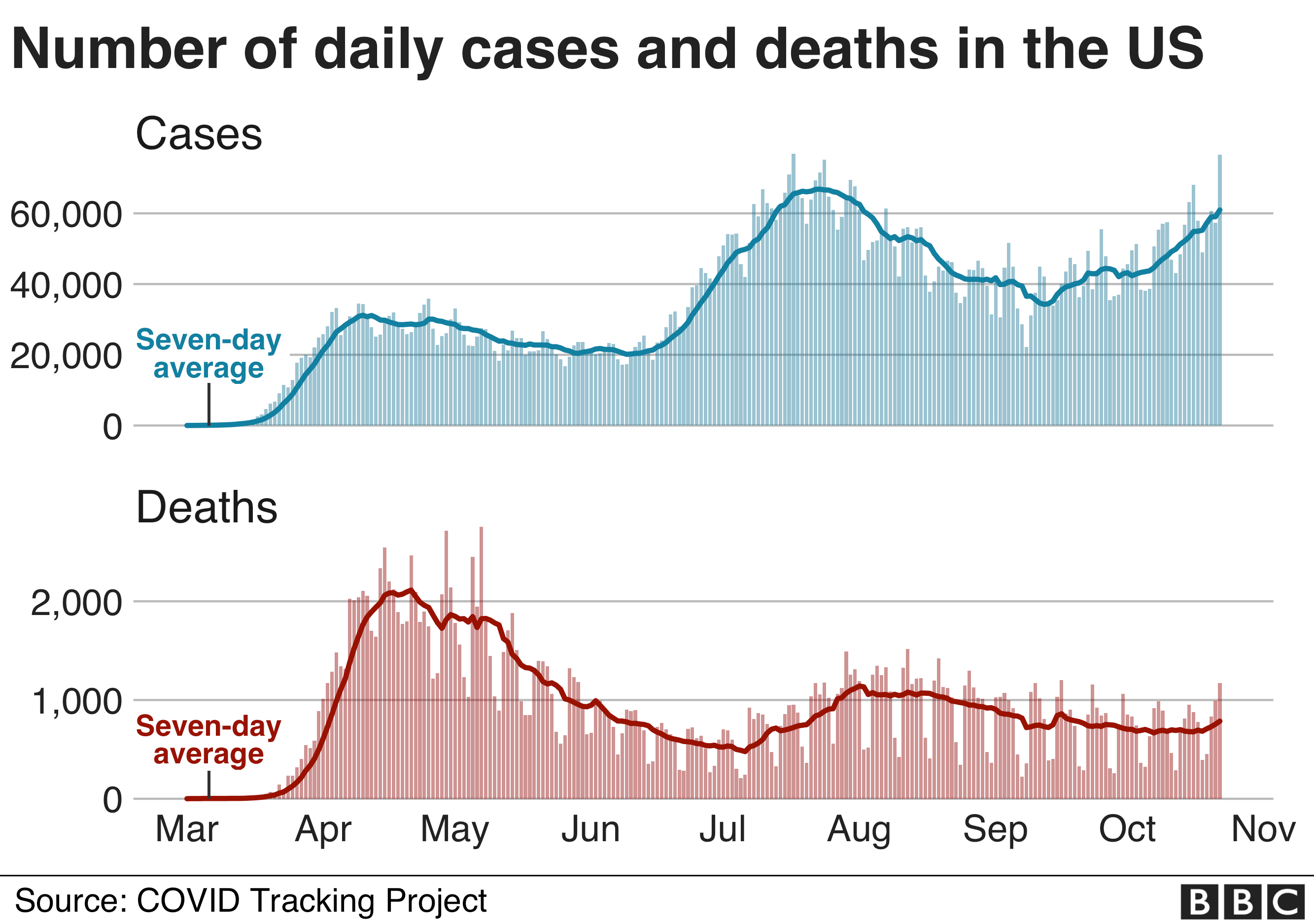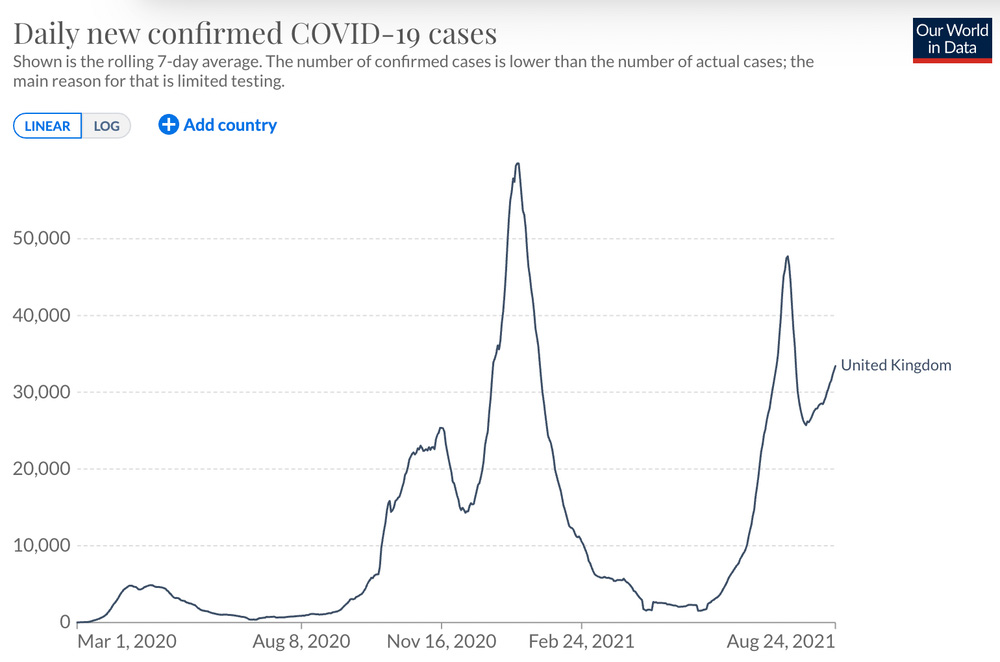Impact of COVID Surges on Society

COVID-19 surges have had a profound and multifaceted impact on society, extending beyond the immediate health consequences. The economic, healthcare, and social ramifications of these surges have been significant, leaving lasting impressions on individuals, communities, and the global landscape.
Economic Consequences
COVID-19 surges have had a devastating impact on the global economy, leading to widespread business closures, supply chain disruptions, and job losses.
- Business Closures: Lockdowns and social distancing measures implemented to curb the spread of the virus forced businesses to temporarily or permanently shut down, leading to significant revenue losses and economic hardship.
- Supply Chain Disruptions: The pandemic disrupted global supply chains, causing shortages of essential goods and services, and contributing to inflation. The closure of factories and transportation networks, coupled with labor shortages, hindered the production and distribution of goods, impacting businesses and consumers alike.
- Job Losses: The economic downturn triggered by COVID-19 surges resulted in widespread job losses across various sectors. Businesses facing reduced demand or operational challenges were forced to lay off employees, leading to unemployment and financial instability for many individuals and families.
Impact on Healthcare Systems
COVID-19 surges have placed immense pressure on healthcare systems worldwide, straining resources and leading to challenges in providing timely and effective care.
- Hospital Capacity: The surge in COVID-19 cases overwhelmed hospitals, leading to a shortage of beds, ventilators, and other essential medical equipment. This strain on resources forced hospitals to make difficult decisions regarding patient care, including postponing elective surgeries and diverting resources to COVID-19 patients.
- Staffing Shortages: The pandemic led to a shortage of healthcare professionals, including nurses, doctors, and other essential staff. Many healthcare workers contracted the virus, while others were forced to quarantine or leave the workforce due to childcare responsibilities or fear of exposure. This shortage exacerbated the strain on healthcare systems, leading to longer wait times and reduced access to care.
- Treatment Delays: The focus on COVID-19 patients resulted in delays for patients with other medical conditions. Elective surgeries and non-urgent procedures were postponed, leading to potential deterioration in health and increased healthcare costs in the long term. This delay in treatment for other health issues has had a significant impact on patient outcomes and overall healthcare access.
Social and Psychological Effects
COVID-19 surges have had profound social and psychological consequences, impacting individuals and communities in various ways.
- Fear and Anxiety: The constant threat of infection, the uncertainty surrounding the virus, and the economic fallout have led to widespread fear and anxiety. The fear of contracting the virus or spreading it to loved ones has significantly impacted people’s daily lives, leading to changes in behavior, social interactions, and mental well-being.
- Isolation and Loneliness: Social distancing measures and lockdowns have resulted in isolation and loneliness for many individuals. The inability to engage in social activities, visit loved ones, or participate in community events has taken a toll on mental health, particularly for vulnerable populations, such as the elderly and those with pre-existing mental health conditions.
- Mental Health Challenges: The pandemic has significantly impacted mental health, leading to increased rates of depression, anxiety, and post-traumatic stress disorder. The economic hardship, job losses, and social isolation associated with COVID-19 surges have contributed to a rise in mental health issues, requiring increased attention and resources to address this growing public health concern.
Public Health Responses to COVID Surges

Public health responses to COVID-19 surges have been crucial in mitigating the impact of the pandemic. These responses have evolved over time, incorporating lessons learned from previous surges and adapting to the changing nature of the virus. This section will delve into the various interventions employed, their effectiveness, and the challenges faced in implementing them.
Comparison of Public Health Interventions
Public health interventions have been a cornerstone of the COVID-19 response. These interventions have aimed to reduce transmission, protect vulnerable populations, and alleviate strain on healthcare systems. A comparison of different interventions implemented during COVID-19 surges is provided in the table below:
| Intervention | Description | Effectiveness | Limitations |
|---|---|---|---|
| Mask Mandates | Requiring individuals to wear face masks in public settings. | Studies have shown that mask mandates can significantly reduce transmission of COVID-19. | Compliance can be a challenge, and mask efficacy varies depending on type and fit. |
| Lockdowns | Restricting movement and gatherings to reduce contact and transmission. | Lockdowns have been effective in slowing the spread of COVID-19, but they have significant economic and social consequences. | Lockdowns can have severe economic impacts, lead to mental health issues, and raise concerns about civil liberties. |
| Vaccination Campaigns | Promoting and facilitating widespread vaccination to reduce severity and transmission. | Vaccines have been highly effective in reducing hospitalizations and deaths from COVID-19. | Vaccine hesitancy, access to vaccines, and emerging variants can limit the effectiveness of vaccination campaigns. |
| Testing and Contact Tracing | Identifying infected individuals and their contacts to isolate and prevent further spread. | Testing and contact tracing can help to break chains of transmission, but they are most effective when implemented quickly and efficiently. | Resource limitations, privacy concerns, and the availability of rapid tests can impact the effectiveness of these strategies. |
Timeline of Key Public Health Measures, Covid surge
The COVID-19 pandemic has been marked by a series of surges, each requiring tailored public health responses. A timeline of key measures taken in response to specific surges highlights the evolving nature of the pandemic and the challenges faced by public health officials:
- Early 2020: The first surge of COVID-19 in many countries led to widespread lockdowns, travel restrictions, and social distancing measures. These measures were initially effective in slowing the spread of the virus, but they came with significant economic and social costs.
- Late 2020: As the virus continued to spread, many countries implemented mask mandates, expanded testing and contact tracing, and began rolling out vaccination campaigns. These measures helped to mitigate the impact of subsequent surges, but the emergence of new variants posed new challenges.
- 2021-2022: The emergence of highly transmissible variants, such as Delta and Omicron, led to renewed surges in many parts of the world. Public health responses focused on increasing vaccination rates, promoting booster doses, and encouraging the use of masks and other preventive measures.
Comparative Strategies Across Countries and Regions
Different countries and regions have adopted a range of strategies in managing COVID-19 surges. Some countries have favored strict lockdowns and social distancing measures, while others have relied more heavily on vaccination campaigns and other non-pharmaceutical interventions.
- China: China has adopted a “zero-COVID” strategy, implementing strict lockdowns and travel restrictions to eliminate outbreaks. This strategy has been successful in suppressing the virus, but it has come at a significant economic and social cost.
- United States: The United States has taken a more decentralized approach, with individual states and cities implementing a range of measures. This approach has led to a patchwork of policies, with varying levels of effectiveness.
- European Union: The European Union has implemented a coordinated response, with member states working together to share information and coordinate measures. However, there has been variation in the stringency of measures across different member states.
“The COVID-19 pandemic has highlighted the importance of a coordinated and comprehensive public health response, with interventions tailored to the specific circumstances of each surge.”
Covid surge – The recent surge in COVID cases has brought a stark reminder of our collective vulnerability. We are reminded of the strength and resilience of the human spirit, much like the indomitable spirit of Olympic skier Tom Craig, whose journey to the top is an inspiring tale here.
As we navigate this new wave of the pandemic, may we find solace in the unwavering spirit of those who have overcome adversity, and emerge stronger, united, and ready to face the future with courage and hope.
The recent surge in COVID cases has reminded us of the fragility of life, and the importance of finding moments of joy and strength in the face of adversity. As we navigate this challenging time, it’s inspiring to witness the resilience of the human spirit, exemplified in the dedication and skill of athletes like those competing in the sport climbing combined olympics usa.
Their unwavering focus and determination offer a powerful reminder that even amidst uncertainty, we can strive for excellence and find purpose in our pursuits. May their achievements inspire us all to rise above the challenges we face, and embrace the spirit of resilience that binds us together.